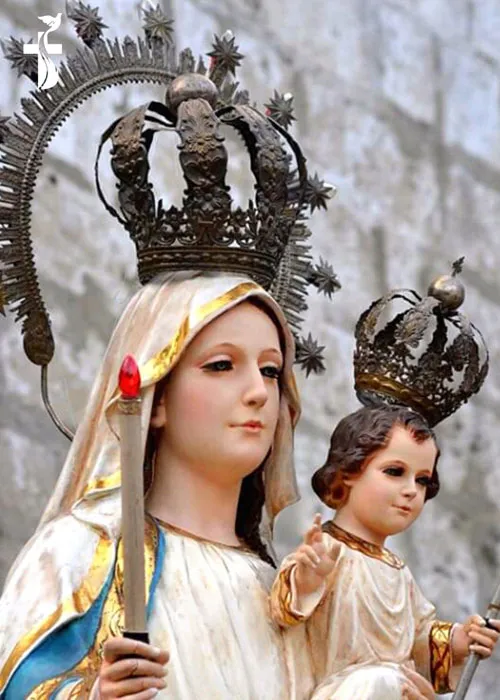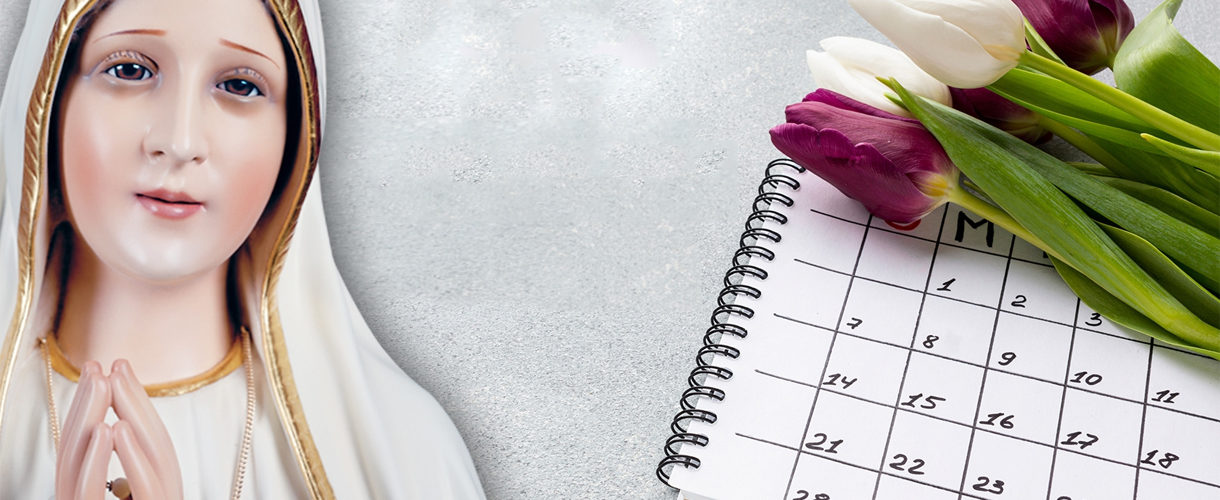
Our Lady Of The Candles
Country :
Year :
When white men came for the first time to the Canary Islands, the natives presented them with a mystery that no one has ever solved, the presence on the islands of a statue of Our Lady. The natives had discovered the statue in 1400, found in a cave by two shepherds taking refuge there from a storm. The men had never seen a statue before and thought it was alive. They motioned for the stranger to go away, for the sheep would not enter the cave for fear; when it did not move, one of the men took a rock and threw it at the statue; instantly his arm stiffened and began to pain. The other shepherd went close to the statue; it neither moved nor spoke. The man puzzled, took out his knife and tried to cut its finger; his own began to bleed. Terrified, the two men fled, leaving their sheep.
They reported to their chief that a great god lived in the cave; he commanded them to bring it to him. When they touched the statue, they were instantly healed of their wound and ailment. They carried the statue to a house and tried to honor it the best they could. A few nights later they were surprised to hear beautiful music, and to see strange beings, all alight, setting candles around the strang “god” and lighting them. The natives had never seen candles. A special house was built for the stranger and for fifty years there was beautiful music, light and lovely fragrance surrounding it–explainable by no one. They made offerings of fruit and flowers and noted that the light “beings” kept the candles burning around the crude altar. In 1520 a native boy was captured and taken to Spain; he returned after a few years, and told them about Christianity; when missionaries came, the people were prepared to receive them.
Christians on a nearby island, recognizing whom the statue represented, begged the natives of Tenerife to let them have it; the pagan natives refused, claiming she had brought them good fortune. The Christians decided to steal the statue, feeling it should be in Christian hands. They succeeded, brought it to the church, set it on the high altar and surrounded it with burning candles. In the morning the statue had turned her back to the congregation and no amount of pulling could get it front again. Serious sickness invaded the island; sorry and frightened, the Christians took the statue back. The natives had not missed it, since another had stood in its place the entire time the original was gone.
Devotion to the Lady of the Candles spread rapidly through Spanish countries to South America and the Phillipines.
The original statue is made of heavy reddish wood, which had never been identified; it is 3 and-a-half feet high; the eyes follow the beholder, and the color of the cheeks sometimes changes. The hair is uncovered, golden and worn in braids. The Babe has a golden bird in its hands. Our lady holds a candle in her hand.
Since there are no bees on the island, the candles are a mystery, too. A few days before the feast of Candlemass in 1497, great quantities of a particularly pure wax were found at various places on the island. Several times since, the same thing has happened. People gather the wax and save it for pious souveniers. It is sometimes found in the shape of loaves, weighing ten or twelve pounds. Another mystery concerns the candle stumps which even today are found near the cave. Some are set up on the rocks of the beach. Wax and wicks are of strange materials, which the good people of the neighborhood insist, could only come from heaven.



